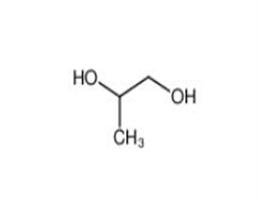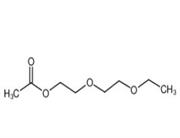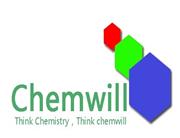1/1
Propylene glycol
- Min. Order1KG
- Purity99.50% IN STOCK
- Cas No57-55-6
- Supply Ability85550 MT per month
- Update time2020-06-02
Since:2004-09-01
Address:BLDG 9,No.235 Sanlin road,Pudong new district,Shanghai,China
| Product Name | Propylene glycol |
| CAS No | 57-55-6 |
| EC-No | |
| Min. Order | 1KG |
| Purity | 99.50% IN STOCK |
| Supply Ability | 85550 MT per month |
| Release date | 2020/06/02 |
Propylene glycol COA TDS price MSDS
Propylene glycol MSDS
Propylene glycol TDS
Propylene glycol price
Product no. chemwill-Propylene glycol-920936
Propylene glycol Manufacturer High quality Best price In stock factory
Propylene glycol CAS 57-55-6
Propane-1,2-diol; Propylene glycol CAS 57-55-6
highly quality and immedaite delivery
1,2-Propanediol (CAS NO.57-55-6 ), also known as Propylene glycol, is a colorless, odorless, viscous, highly hygroscopic liquid with a faintly sweet taste. It is miscible with water, ethanol, ether, chloroform, acetone and other organic solvents. The solubility to hydrocarbons and chlorinated hydrocarbons is small, but it is strong than ethylene glycol. Propylene Glycol contains an asymmetrical carbon atom, so it exists in two optically active forms (dextrorotatory and sinistrorotatory isomers). And the commercial Propylene Glycol is a racemic mixture.
Physical properties about Propylene Glycol are: (1)ACD/LogP: -1.341; (2)ACD/LogD (pH 5.5): -1.34; (3)ACD/LogD (pH 7.4): -1.34; (4)ACD/BCF (pH 5.5): 1.00; (5)ACD/BCF (pH 7.4): 1.00; (6)ACD/KOC (pH 5.5): 4.44; (7)ACD/KOC (pH 7.4): 4.44; (8)#H bond acceptors: 2; (9)#H bond donors: 2; (10)#Freely Rotating Bonds: 3; (11)Index of Refraction: 1.43; (12)Molar Refractivity: 18.976 cm3; (13)Molar Volume: 73.444 cm3; (14)Polarizability: 7.523 10-24cm3; (15)Surface Tension: 38.0040016174316 dyne/cm; (16)Density: 1.036 g/cm3; (17)Flash Point: 107.222 °C; (18)Enthalpy of Vaporization: 49.011 kJ/mol; (19)Boiling Point: 184.848 °C at 760 mmHg; (20)Vapour Pressure: 0.203999996185303 mmHg at 25°C
Preparation of Propylene Glycol: Propylene Glycol can be obtaine by epoxypropane. It includes direct hydration and indirect hydration. The direct hydration is the reaction of epoxypropane and water at 150-160 °C and 0.78-0 .98 MPa. After evaporation and distillation, Propylene Glycol is obtained. The indirect hydration is the reaction of epoxypropane and water in the presence of catalyst sulfuric acid. In addition, Propylene Glycol also can be produced by direct catalytic oxidation from propylene. The catalyst is anhydrous tertiary butanol.
Uses of Propylene Glycol: Propylene Glycol is an important raw material in unsaturated polyester, epoxy resins, polyurethane resins, plasticizers and surfactants. The amount occupies about 45% of total consumption. This unsaturated polyester is largely used for surface coatings and reinforced plastics. Because of good viscosity and moisture absorption, and non-toxic, Propylene Glycol is widely used as a hygroscopic agent, antifreeze, lubricants and solvents in the food, pharmaceutical and cosmetics industries. In the food industry, Propylene Glycol and fatty acid reacts to produce propylene glycol ester of fatty acid, which is mainly used as food emulsifier. It is also used as solvent for spices, seasonings and food coloring. What's more, 1,2-propanediol is used as a humidifying agent of tobacco, mildew preventive, fruit ripening preservatives, film-forming coatings additives, antifreeze and heat transfer media, etc. It is often used as a substitute for ethanol and glycerol. In pharmaceutical industry, Propylene Glycol is commonly used as solvent in the manufacture of various types of ointment, softener, excipients, preservatives, vitamins, penicillin, etc. As Propylene Glycol has good solubility with various spices, it is also used as solvent of cosmetic and softeners, etc.
Name: Propylene glycol
Synonyms: Propyledne glycol;Glycerol Impurity 3(Glycerol EP Impurity C);Propyleneglycol Manufacturer;1,2-PROPANEDIOL, GR ACS 99.5%;PROPYLENEGLYCOLTECHGRADE;Propane-1,2-diol particulates;Propane-1,2-diol total (vapour and particulates);Propylene Glycol, Reagent
CAS: 57-55-6
MF: C3H8O2
MW: 76.09
EINECS: 200-338-0
Propylene glycol, also called propane-1,2-diol, is an organic compound with the chemical formula C3H8O2. It is a viscous colorless liquid which is nearly odorless but possesses a faintly sweet taste. Chemically it is classed as a diol and is miscible with a broad range of solvents, including water, acetone, and chloroform.
It is produced on a large scale and is primarily used in the production of polymers but also sees use in food processing as the E-number E1520, and as a process fluid in low temperature heat exchange applications.
The compound is sometimes called α-propylene glycol to distinguish it from the isomer propane-1,3-diol (β-propylene glycol).
Appearance & Physical State clear viscous liquid
Density 1.036 g/mL at 25ºC(lit.)
Boiling Point 187ºC
Melting Point -60ºC
Flash Point 99ºC
Refractive Index n20/D 1.432(lit.)
Stability Stable under normal temperatures and pressures.
Storage Condition Store at RT.
Safety Info
Safety Statements S24/25
HS Code 2905320000
Propylene glycol Usage And Synthesis
Physical and Chemical Properties Propylene glycol is scientifically named as “1,2-propanediol”, and has a chemical formula of CH3CHOHCH2OH and a molecular weight of 76.10.
Propylene glycol Preparation Products And Raw materials
Preparation Products Methyl acrylate-->Pyruvic acid-->PAINT-->Phytic acid-->Adhesive-->4-Hydroxystyrene-->Unsaturated polyester resin-->1,3-Dibromopropane-->Curcumin-->2,4,5-Trichlorophenol-->1,3-Dichloropropane-->3-Chloro-1,2-propanediol-->Glycidol-->LACCAIC ACID-->Propylene carbonate -->alpha-d-Glucopyranoside, beta-d-fructofuranosyl, octadecanoate -->MONASCUS RED-->Famciclovir-->Meprobamate-->2-OXAZOLIDINONE, 5-(HYDROXYMETHYL)-3-(3-METHYLPHENYL)--->5,8-Dihydroxy-2-[(1R)-1-hydroxy-4-methyl-pent-3-enyl]naphthalene-1,4-dione-->Poly(propylene glycol)-->4-Hydroxy-2,5-dimethyl-3(2H)furanone-->PROPYLENE GLYCOL MONOSTEARATE (CONTAINS CA. 35% MONOPALMITATE)-->1,1'-Oxydi-2-propanol-->Diprophylline-->2,4-DIHYDROXY-3,3-DIMETHYLBUTANOIC ACID-->demulsifier PE series-->Maiz moraelo colour
Raw materials Methanol-->Chlorine-->Propylene oxide-->1-Chloro-2-propanol-->Propylene carbonate
Product Categories: -;INORGANIC & ORGANIC CHEMICALS;Medicine grade
Mol File: 57-55-6.mol
Propylene glycol Structure
Propylene glycol Chemical Properties
Melting point -60 °C
Boiling point 187 °C(lit.)
density 1.036 g/mL at 25 °C(lit.)
vapor density 2.62 (vs air)
vapor pressure 0.08 mm Hg ( 20 °C)
refractive index n20/D 1.432(lit.)
FEMA 2940 | PROPYLENE GLYCOL
Fp 225 °F
storage temp. Store at RT.
form Viscous Liquid
color APHA: ≤10
Specific Gravity 1.038 (20/20℃)1.036~1.040
PH 6-8 (100g/l, H2O, 20℃)
Company Profile Introduction
Over 30 years experience in the chemical industry, Chemwill Asia Industrial co.,Ltd is one of the leading GMP complied manufacturer of Organic compounds in CHINA. Our main production base is located in Jiangsu province. We produce a wide range of organics including Active pharmaceutical ingredients(APIs), Veterinary, Indole derivatives, Aromatics, Fluorine, Boronic acids, organocatalysts, chiral building blocks, heterocyclic compounds. We are certified both to the ISO 9001 and ISO 14001 Standards, have a safety management system in place. Our advantageous business including: - Intermediate using for Pharmaceuticals - Active ingredient for Pharmaceutical and animal health (Human APIs and Veterinary APIs) - Fluorine, boronic acids, unnatural amino acids, cross linkers,chiral building blocks - Intermediate using for advanced performance materials - Monomer & polymers, high performance, photosensitive and specialty chemicals - Electro chemical materials(Lithium Battery, Photoresist, semiconductor, IT-related chemicals) * Custom synthesis from the laboratory scale to commercial production. * Contract research, custom manufacturing and contract-manufacture Ms Ella Lee - Deputy Sales Manager Phone: +86 -21-51086038 Email: chemwill_asia@126.com;chemwill@hotmail.com To learn more about our factory, PLS visit: www.chemwill.com


 China
China

